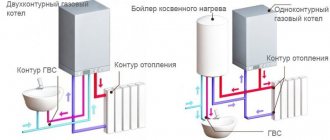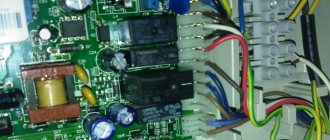Grounding in the understanding of ordinary people is a pin or a group of metal corners (circuit) driven into the thickness of the soil. Why is he driven in? Surely everyone knows that for protection by connecting it to the housings of electrical appliances on which a phase may appear in an emergency. And then many people’s knowledge is mixed into a picture created from fragments of quotes and incorrect interpretations.
The topic of grounding is very important and broad. Therefore, to understand how grounding works, we will try to consider all the processes clearly with an explanation in words that are easy for ordinary people (not electricians) to understand.
Protective grounding and other measures for indirect contact
The rules for the protection of electrical installations state that to protect against electric shock in the event of insulation damage, the following protective measures for indirect contact must be applied individually or in combination:
- Protective grounding.
- Automatic power off.
- Potential equalization.
- Potential equalization.
- Double or reinforced insulation.
- Ultra-low (low) voltage.
- Protective electrical separation of circuits.
- Insulating (non-conductive) rooms, zones, areas.
As you can see, there is such a thing as protective grounding during indirect contact. We are not interested in other protection measures, except for automatic power off, in this topic. And in addition to protective grounding, there is also working grounding.
Therefore, at this stage, let’s define the terminology:
- Grounding is an intentional electrical connection of any point in the network, electrical installation or equipment with a grounding device.
- Protective grounding is grounding performed for electrical safety purposes.
- Working (functional) grounding - grounding of a point or points of live parts of an electrical installation, performed to ensure the operation of the electrical installation (not for electrical safety purposes).
- Indirect touch is electrical contact of people or animals with exposed conductive parts that become energized when the insulation is damaged.
We are more interested in electrical safety. Therefore, when talking about how grounding works, we will consider protective grounding paired with automatic power off. But you need to understand that grounding, in addition to protective, can also be operational.
The principle of calculating the resistance of grounding conductors
There are quite a few ways to calculate the characteristics of the main grounding elements, but the main parameter for such calculations is the same - the resistance indicator. Its optimal value is determined using data from the normative regulation of the PUE. It is impossible to implement reliable protective grounding of an object without calculating the resistance of its main elements.
For example, it is necessary to determine the grounding resistance for electrical equipment with voltages over 1 kW, with an isolated neutral. In accordance with the profile data of the documentation PUE 1.7.96, it is necessary to use the formula R≤250/I, where:
Grounding and Ohm's Law
Electricity (electric current) is the directed movement of electrically charged particles. Electricity requires a power source and a closed circuit. In our case, we will consider a distribution transformer. It gives the wires voltage. Voltage is the difference in electrical potential. There can be a potential difference between at least two points. And in a household electrical network, the potential difference between phase and neutral (zero working conductor) is 220 Volts. The phase has a potential of 220 V, and the neutral wire has a potential of 0 relative to the power source and the phase wire.
So, we have identified the voltage, phase and neutral conductors. Everyone is probably familiar with these concepts. All we have to do is consider resistance and current. Current strength is a quantity equal to the ratio of the amount of charge passing through the cross-section of a conductor to the time of its passage. Measured in Amperes. Let's remember Ohm's law:
| The current strength in a section of a circuit is directly proportional to the voltage at the ends of this section and inversely proportional to the resistance of this section. | |
| I = U / R , where I is the current strength; U is voltage; R - resistance. |
Since the resistance of the wires themselves have small values, if you connect a phase to zero, the current in the circuit will be very large and a short circuit will result. But when connecting light bulbs and other household appliances to a socket, such a short circuit does not occur. Household appliances have high resistance values and do not cause large short circuit currents in the circuit.
Appendix: project in DWG and PDF formats
Files in DWG and PDF formats are available for downloading only to authorized users.
Do you need to complete a grounding and lightning protection project? Order it by contacting the ZANDZ.ru Technical Center!
Still have questions about this calculation? Ask it in the comments to this page!
How does grounding work in a private house (TT system)
Now let's move on directly to considering the topic of grounding using the example of a private house with electrical equipment grounded using the TT system. From the distribution transformer along the poles, single-phase 220 Volt power comes to each house - phase and neutral (working neutral wire). In addition to the fact that the neutral has zero potential, at the distribution substation it is connected through a ground loop to the ground loop of our house. Let's explain this in simple words. We know that the earth is a conductor, but not an ideal one. Depending on the soil, resistivity may differ:
| Soil resistivity | |
| Type of soil | Specific resistance, Ohm/m |
| Clay | 50 |
| Limestone is dense | 1000 — 5000 |
| Limestone loose | 500 — 1000 |
| Limestone soft | 100 — 300 |
| Granite and sandstone depending on weathering | 1500 — 10000 |
| Weathered granite and sandstone | 100 — 600 |
| Humus layer | 10 — 150 |
| Silty soils | 20 — 100 |
| Marls of the Jurassic period | 30 — 40 |
| Marls and dense clay | 100 — 200 |
| Mica shales | 800 |
| Clay sand | 50 — 500 |
| Siliceous sand | 200 — 3000 |
| Layered shale soils | 50 — 300 |
| Bare rocky ground | 1500 — 3000 |
| Rocky ground covered with grass | 300 — 500 |
| Wetlands | From a few units to 30 |
| Wet peaty soils | 5-100 |
Let's imagine that somewhere deep down, in some layer, there is a conventional conductor with a resistance close to zero. By making a grounding loop at the substation, we reduce the resistance from the transformer zero to this conductor.
Similarly, with the help of a ground loop in the house (TT grounding system), we reduce the resistance through the ground to this conditional conductive layer. And when a phase breaks down on our grounding, a closed circuit is formed. Why is this necessary? For protection against electric shock, for example, in the event of a phase breakdown on the body of a grounded household appliance. And for clarity and understanding, we will simulate several situations using the Electronics Workbench program.
Compare the diagram below with the previous illustration:
| From left to right. 2 Ohm - neutral grounding. Above is the transformer. From it, the phase enters the house (we do not need a neutral wire, since we are simulating a phase breakdown to the housing). In this example, the house ground loop is poor and has a resistance of 100 ohms. A person touches the housing with dangerous potential. Let's take the total resistance of a person, shoes, and floor to be 4000 Ohms. As a result, a current of 2.2 A will appear in the phase-grounding-neutral circuit (this is not enough to trip the circuit breaker), and a dangerous current of 54 mA will flow through the person. |
Consider the second situation, when the loop resistance is 4 ohms:
| Additionally, the voltages between phase and ground through the ground loop are indicated. There was a drop from 220 Volts to 146 Volts. The next fall in the area is from the ground through the transformer ground electrode to the neutral. In this section the voltage is already 73 Volts. That is, the current through grounding does not simply flow into the ground. It moves from a point of higher potential to a point of lower potential through the ground. And during the movement, when a phase breaks down to the ground, voltage is lost due to the resistance of the ground. |
Let's return to the protective functions of grounding. As you can see, with a circuit resistance of 4 ohms, the short circuit current is 36.7 A. And this is enough to trip a properly selected circuit breaker. At the same time, the current passing through the person decreased to 36.8 mA. But this is still a dangerous value if the machine does not operate. And if we are talking about the TT grounding system, then the circuit breakers here must necessarily be supplemented with an RCD (residual current device).
What are the types of RCDs?
RCDs are divided into two types: AC and A.
AC type reacts to leakage of alternating (sinusoidal) currents. However, not only alternating current, but also direct (pulsating) current can leak in electrical circuits. Type A RCD is intended specifically for such cases. Such devices should be used in a number of cases (for example, in the operating instructions for washing machines, dishwashers and other powerful household electrical appliances, you can find a requirement to install this particular type of RCD).
In addition to RCDs installed on the distribution panel, you can find electrical sockets with a built-in RCD. These devices are of two types: the first is installed in place of an existing socket, the second is connected to an existing socket. The third type of device with a built-in RCD is the so-called “RCD plug”.
Effective protective devices also include differential circuit breakers, which are a combination of a circuit breaker with an RCD (two-in-one type). The differential circuit breaker is triggered in both cases: both in case of current leakage to the ground and in case of short circuits and overload. They are advantageous when there is not enough space to install two separate devices in the electrical cabinet. The price for a differential circuit breaker is higher than the price for an RCD.
Grounding - what is it (definitions)
In conclusion, we present some common definitions of grounding. Grounding is an intentional electrical connection of any point in the network, electrical installation or equipment with a grounding device. In electrical engineering, with the help of grounding, protection from the dangerous effects of electric current is achieved by reducing the touch voltage to a value that is safe for humans and animals.
Another definition. Grounding is the connection of the housings of all electrical appliances in the house with the ground through the circuit of the grounding device. For this purpose, there is a separate core in the entire system, including the cable of the electrical appliance. It goes from the sockets through the shield to the grounding loop, which is dug into the ground. An appliance connected to such an outlet is protected. That is, if it is faulty and voltage appears on its metal parts, the excess current will go into the ground. In the worst case, a small, harmless charge will remain on the case. When touched, it will feel like a slight tingling sensation.
As you can see, they talk about safety and a slight tingling sensation everywhere. Why are our numbers not so optimistic? Because our examples do not take into account additional protective measures to equalize and equalize potentials. Potential equalization is the electrical connection of conductive parts to achieve equality of their potentials. Potential equalization is the reduction of potential difference (step voltage) on the surface of the earth or floor using protective conductors laid in the ground, in the floor or on their surface and connected to a grounding device, or by using special earth coatings. And this is a separate topic for consideration.
Therefore, when reading such definitions about protective grounding, keep in mind that just a grounding loop is not 100% protection. And if the floor on which you are standing does not have the potential of a phase pierced to the body, then you will not get away with a slight tingling sensation when you touch the body of the device if the automatic power off is not triggered. Everything will be much worse.
Important rule
According to the PUE, the engine is grounded with a separate conductor. In this case, series connection of electric motors with the circuit is prohibited, as shown in the diagram below:
If the circuit is damaged, electric motors connected after the break become potentially dangerous due to lack of grounding. There is a danger of equipment failure. And incorrect operation of the protection exposes personnel to danger. Therefore, such a connection is unacceptable.











